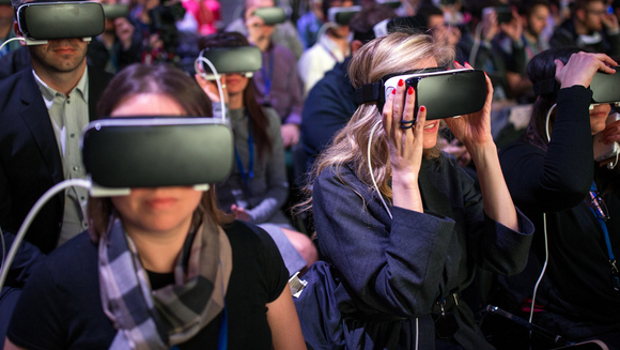 A tweet from Guardian journalist Charles Arthur comparing the slow uptake of VR with the dominance of social media caught my attention and deserves further exploration.
A tweet from Guardian journalist Charles Arthur comparing the slow uptake of VR with the dominance of social media caught my attention and deserves further exploration.
According to Arthur, VR is struggling in the market as it offers a poor alternative to the Social Web’s ability to construct ideological echochambers. Why spend a minimum €2,000 on an Oculus Rift, a gaming rig and a sandbox game if you’re can get a similarly fake kind of self-satisfaction on Twitter for free? Which kind of delusion would you prefer? To Arthur, the approval of strangers is far preferable to the enticing solitude of immersive disconnected spaces.
It’s a fascinating assertion but I think he’s wrong, so I’ll make a few counterpoints in no particular order.
VR isn’t that expensive
I’m assuming Arthur’s view of VR is based on the ‘big rigs’ needed to run the Oculus Rift or HTC Vive with comfort. I agree these aren’t must have devices yet and they haven’t been helped by prohibitive pricing and the mess of cables they come with. Then there’s the all-important convenience factor. How comfortable are they to use? Here I’m in agreement with Arthur: indeed, the market has been let down by incomplete offerings. Where the Vive comes with everything you’ll need in the box, you’ll also need a room big enough to take advantage of the full sensor package. As for the Rift, it didn’t come to market with hand controllers, leaving early adopters to make do with an Xbox controller as an alternative.
But let’s put that to one side because the current wave of consumer VR doesn’t rely on gaming PCs: it’s all about the smartphone. Google Cardboard and Samsung’s Galaxy Gear proved that contemporary smartphones have ample processing power for rudimentary VR experiences. (I could go into the difference between games and ‘experiences’ but we covered it in depth on a recent episode of TechRadio.) The cost barrier to entry has been exaggerated as the gap between ideal and ‘good enough’ is huge. If good enough sells the concept to a broad audience that;s good news for everyone.
VR is resurgent, social media is insurgent
Another reason for slow VR adoption is the sense that we’ve ‘been there, done that, bought the headset and threw it out’. Given the position of VR in science fiction novels and films from Neuromancer to The Matrix, the implementation and interest in it died off until the Oculus Rift appeared as a Kickstarter project. Now we have the graphics and the connectivity to deliver compelling applications gaming, education and even mental health.
In contrast, social media platforms fail but the appetite for them has not. MySpace ebbed where Facebook flowed. Young people were all about Bebo, now they have Snapchat, and Twitter has become essential for rubbernecking at the latest ‘outrage’. From message boards to evaporating images, there is a platform for every taste that is free and easy to join but hard to opt out the more your network grows and FOMO sets in.
Indifference can break a social network but the primal need for community can’t be usurped by recreated experiences in a fictional space. VR and social media have limited mission overlap.
The quick hit v the slow game
A final point I’d like to raise is the notion that VR and social media share a common element: they both insultate users from contrary ideas. To a certain extent this has always been the case. We choose which newspapers to buy, which TV stations to get our news from, what books to read. Our mental landscapes have always been curated.
Social media offers the ability to seal off anything beyond those boundaries, ensuring you never have to be challenged – at least not by anyone you consider worthy of doing so. Social media is also an approval game where each likes or retweets you get delivers a quick dopamine and oxytocin hit. We are being turned into attention junkies one click at a time.
In contrast, VR is playing a longer, slower game as it eases its way into more markets. The creation and exploration of virtual worlds gives pdoesn’t feel as much of a timesuck as tracking a hashtag or watching in-feed videos. Being immersed in VR isn’t the same as being reinforced in social media. Can you get trapped in both? For sure, but where social is sound and fury, VR offers a timeout. A place where nobody knows your name.
So, as fake worlds go, is VR doomed? It’s expensive, slow, has yet to deliver a killer app and is going through the pain of having to sell itself after 20-something years in the wilderness. I have hope. It lacks the power of social media to connect, inform and insult but every medium should be measured by its own standards. Once we know what VR’s standards are I think we’ll see a much more positive appraisal.








Subscribers 0
Fans 0
Followers 0
Followers